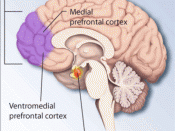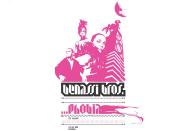AbstractImagine something that you are immensely afraid of and could not bear to be near. That would be an example of a phobia. Phobias are extreme, irrational fears a person can not eliminate, even when there is no real danger. It is not fully known how people develop phobias. Some experts believe they are learned or they are triggered from traumatic events during childhood and adolescence. The National Institute of Mental Health discovered that between 8.7% and 18.1% of Americans have a certain phobia. Everyone has minor phobias such as the fear of heights or bugs. A major phobic disorder occurs when the person has severe panics and overwhelming fear. This may lead to fainting or vomiting and disrupting the person's daily life. Some phobia statistics say that about one in twenty three people suffer from phobias. The three major types of phobias include specific, social, and agoraphobia.
PhobiasGenerally, specific phobias are a person's anxiety and avoidance being focused on particular objects, activities, or situations.
Another word for specific phobia is "simple" phobia. Specific phobias may be the fear of something big or dark and develop in early childhood. These phobias usually stop as a person gets older. Stress, anxiety, and fear may be some causes of specific phobia and there is no explanation. Some symptoms include anxiety, dizziness, sweating, rapid heartbeat, or shortness of breath. People with this phobia will experience the fear more as it gets closer to them (Thompson Healthcare, 2007).
Blood-injection injury type-phobics faint when confronted with their fear. People who experience this will have higher heart rates followed by lowered heart rates and a drop in blood pressure (Thompson Healthcare, 2007).
Younger people and people in their mid-twenties who have suffered a traumatic experience are at higher risk in developing a specific phobia. Doctors diagnose...



Really informative
Good introduction! With the introduction, I fully understand what's the meaning of 'phobia', with the further organized elaborations and detailed informations, I totally think that this is an extremely well planned informative essay.
1 out of 1 people found this comment useful.